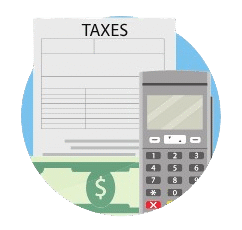For US trades directing stock accompanying tax-all-encompassing costing, correctly segregating tax on goods or services from real stock costs is essential for correct commercial newsgathering and IRS agreement. When suppliers cite prices that contain state tax on goods or services, or when fixing past place tax on goods or services was wrongly contained in stock principles, trades must “withdraw” the tax utilizing reverse forethought forms. This process guarantees your cost of merchandise convinced correctly indicates stock costs while correctly classification tax on goods or services as either an cost or remediable amount for state tax newsgathering.
Understanding the Reverse Sales Tax Formula
The mathematical foundation for reverse tax calculation is straightforward and applies to all US state sales tax rates. When you know the gross amount (including tax) and your state’s sales tax rate, you can determine the net amount using this formula. For businesses looking to streamline these calculations, utilizing a reverse sales tax calculator can significantly reduce computational errors and save time:
Net Amount = Gross Amount ÷ (1 + Tax Rate)
For instance, if you purchased inventory in California for $108 including the state’s 7.25% sales tax, the calculation would be: $108 ÷ 1.0725 = $100.70 net amount, with $7.30 representing the sales tax component. For a deeper understanding of the mathematical principles behind these calculations, refer to our comprehensive guide on understanding sales tax reverse calculation. This separation ensures that only the actual inventory cost appears in your cost of goods sold, while the tax portion is properly categorized for your state sales tax returns.
QuickBooks Desktop Solutions for US Businesses
QuickBooks Desktop offers several approaches specifically designed to handle the complexities of US state sales tax requirements for inventory purchases.
Built-in Tax-Inclusive Feature
The most efficient method utilizes QuickBooks’ native functionality designed for US tax compliance. Navigate to Edit > Preferences > Sales Tax > Company Preferences and enable “Allow tax inclusive (gross) prices and costs to be entered.” When creating bills or purchase orders, check the “Amounts include tax” box at the bottom of the form. Enter your total amount paid, and QuickBooks automatically separates the net cost from the tax portion, ensuring proper account allocation for your state tax reporting. For additional guidance on QuickBooks sales tax setup, refer to the official QuickBooks support documentation.
Manual Journal Entry Method
For adjusting existent efforts place tax on goods or services was mistakenly contained in stock costs—a prevailing issue when transitioning bookkeeping patterns or cleansing up real data—create a chronicle access. Debit the Inventory Asset give reason for the premeditated net amount, credit the original repayment of employee work expenses for the gross amount, and entry a Sales Tax Paid or Tax Expense account for the tax portion. For detailed step-by-step instructions on performing these calculations manually, consult our guide on how to calculate reverse sales tax. This method provides precise control over account classifications and ensures compliance with US GAAP requirements.
Discount Item Approach for Complex State Tax Scenarios
Some US states have complex tax constructions accompanying diversified jurisdictions. For these positions, constituting discount articles can organize treat. Establish a discount part accompanying a portion premeditated as 1 – (1 ÷ (1 + tax rate)). For Texas’s 8.25% linked rate, this equals 7.6336%. This design everything specifically well for trades operating across diversified tax jurisdictions inside the United States.
QuickBooks Online Considerations for US Users
QuickBooks Online’s automated sales tax feature, while helpful for most US businesses, presents challenges for tax-inclusive inventory transactions. The system’s integration with state tax databases makes overrides more complex but still manageable.
Create ritual tax rates fight 0% for non-payable stock positions and exploit the “Override this amount” feature when essential. For tax-all-encompassing purchases from suppliers, manually reckon major computer network amounts utilizing your state’s tax rate and supersede the mechanical estimations on individual undertakings. While less sleek than Desktop resolutions, these forms assert the veracity necessary for state tax on goods or services agreement.
Implementation Best Practices for US Businesses
Initial Setup Requirements
Proper arrangement joins accompanying US tax agreement necessities. Enable tax on goods or services following in inclinations and authenticate appropriate tax codes for your state’s payable and non-payable classifications. Create separate gives reason for tax on goods or services compensated on purchases to uphold clear audit trails for state tax returns and IRS Schedule C or allied tax filing.
Configure your QuickBooks setup to match your state’s specific requirements. For example, businesses in states like Delaware with no sales tax need different configurations than those in high-tax states like California or New York with rates exceeding 10% in some jurisdictions.
Ongoing Management Protocols
Consistency becomes critical when dealing with varying state tax rates across suppliers. Apply uniform methodology across all similar purchases to ensure consistent treatment for tax reporting purposes. Regularly reconcile calculated amounts with actual state tax payments to identify discrepancies before filing quarterly or annual returns.
Maintain detailed documentation of tax-inclusive purchases and calculations, particularly important for businesses subject to state sales tax audits. Many states, including California, Texas, and Florida, conduct regular compliance reviews where proper documentation proves essential.
Financial Reporting Considerations
Accurate cost of merchandise convinced predictions straightforwardly impact your general tax burden and state revenue tax filing. Ensure stock costs indicate net amounts only, accompanying tax amounts correctly written inappropriate burden or payment reports. This break-up influences raise computations on your Schedule C or allied returns and guarantees agreement accompanying US GAAP guidelines for stock appraisal.
Practical Applications Across US Markets
Reverse tax calculations become necessary in several scenarios common to US businesses. Suppliers who quote tax-inclusive prices—particularly common in wholesale markets like those found in Los Angeles, Chicago, or Atlanta—require proper treatment to separate costs accurately.
Historical dossier explanation frequently includes withdrawing poorly written tax amounts, exceptionally when trades change from cash to growth bookkeeping systems or when fitting for bank funding requests that demand clean economic charges.
Interstate commerce adds complexity, as purchases may include sales tax from the supplier’s state that may or may not be creditable against your state’s use tax obligations. Understanding these nuances ensures proper compliance across jurisdictions.
For businesses dealing with international suppliers who include various taxes in their pricing, understanding calculation principles becomes crucial for US tax compliance. For detailed step-by-step instructions on performing these calculations manually, consult our guide on how to calculate reverse sales tax.
Common US State Tax Rate References
For quick verification, here are net amounts for popular US state tax rates on $1,000 gross purchases: California (7.25%) yields $932.40 net, Texas (8.25%) produces $924.21, New York (8%) results in $925.93, Florida (6%) gives $943.40, and Washington (10.4%) produces $903.85. These reference points facilitate rapid verification during transaction entry across major US markets. For additional calculation tools and comprehensive resources for sales tax management, businesses can access specialized calculators designed for US tax compliance.
State-Specific Considerations
Different states present unique challenges for inventory accounting. States like Oregon and Montana with no sales tax simplify calculations, while states like Louisiana with complex parish-level additions require careful attention to total effective rates.
Businesses operating in multiple states must account for varying tax treatments of inventory purchases. Some states exempt manufacturing inputs while others tax them fully, affecting how reverse calculations should be applied across different inventory categories.
Conclusion
Mastering reverse tax on goods or services forethoughts in QuickBooks guarantees US trades uphold correct stock appraisal while conference state and general tax agreement necessities. Whether utilizing automatic facial characteristics in Desktop or manual cancels in Online, constant request supports trustworthy monetary newsgathering necessary for IRS filing and state tax returns.
The investment in establishing proper procedures pays dividends through improved financial accuracy, simplified audit processes, and enhanced management reporting capabilities. Regular review and reconciliation maintains ongoing accuracy and identifies potential improvements in your accounting processes. Businesses can leverage specialized reverse sales tax calculation tools to ensure consistency and accuracy across all transactions while reducing the risk of manual calculation errors that could trigger costly state tax audits or IRS scrutiny.
For US trades, decent tax on goods or services management on stock purchases isn’t just good bookkeeping practice—it’s essential for upholding agreement accompanying complex state tax managing while guaranteeing correct cost study for competing estimating determinations in American markets.

